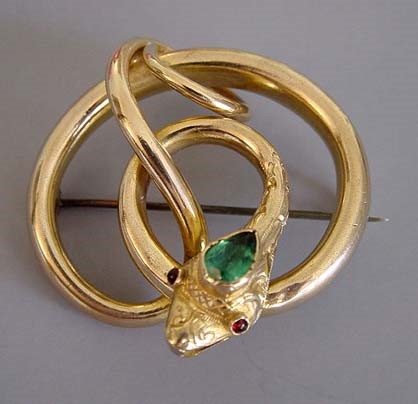Acquired by J. Baptista in 2021, this beautiful brooch has always sparked curiosity within our team of experts. The goldwork, the choice of stones, and the use of the serpent image indicate a piece from the 40s/50s. Could it have been a gift for a loved one? If so, why the use of the serpent? What is its symbolism?
We present a small study below, to answer this and other questions resulting from a deeper look at this piece.
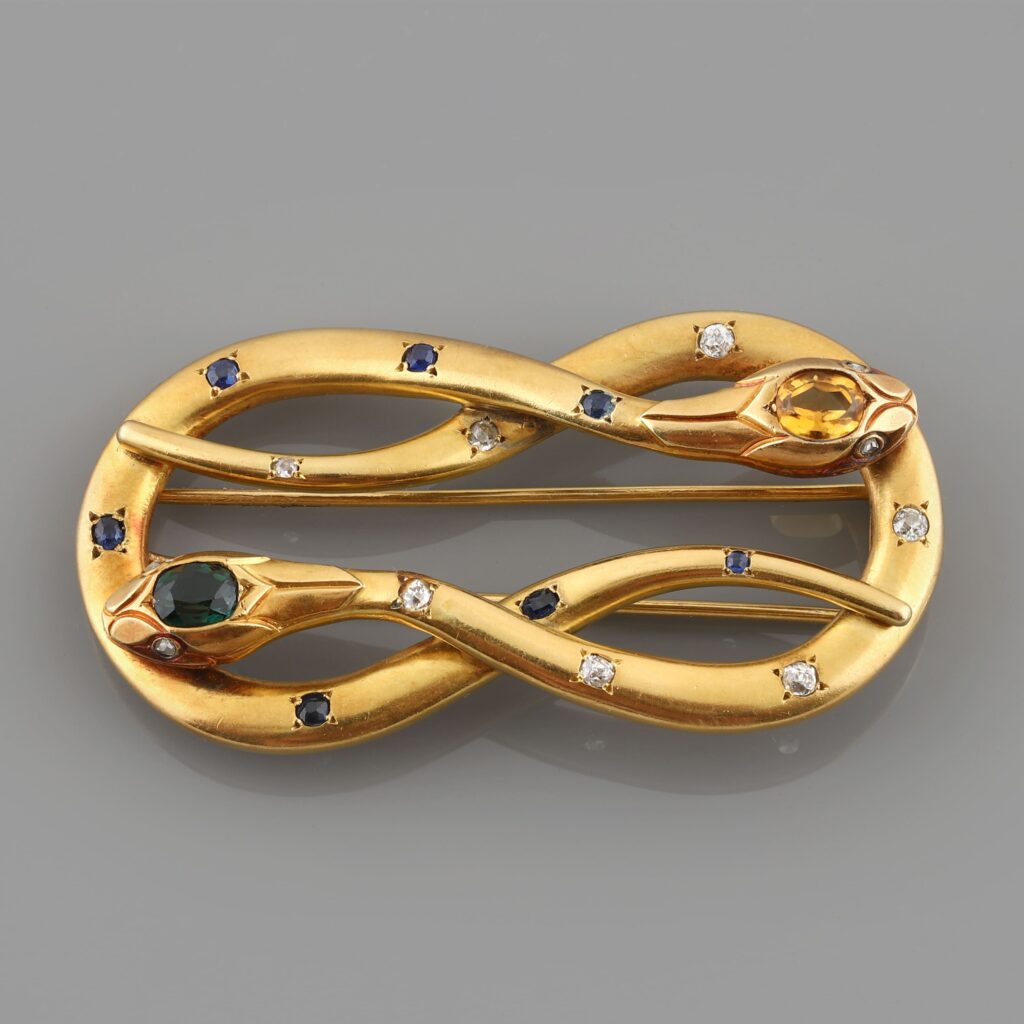
“The serpent distinguishes itself from all animal species.”
(CHEVALIER;GHEERBRANT, PAGE 594)
Linked to the very idea of life, the image of the serpent has been used since ancient times. It is represented through a living line, which has no beginning or end but continues beyond an infinite.
The serpent is so important that it has served as inspiration for countless myths and biblical stories, and used as an attribute of great deities and/or historical characters:
- The Ananta Serpent, a Hindu divinity, is associated with Vishnu and Shiva;
- In Christianity we find the serpent as an attribute of Mary, mother of God;
- In Greek mythology, we find the serpent connected to many deities:
- as an attribute of Athena the Goddess of wisdom and warfare;
- as an attribute of Asclepius, God of medicine, where the image of the serpent coiled on a stick is still used today as a symbol of health;
- as an attribute of Hermes, a symbol of commerce;
- as an attribute of Medusa whose hair is formed by serpents;
- among many others.
In ancient Rome, the serpent symbolized truth, neutrality, and peace. It also represented fertility, rebirth, and protection against evil spirits.
The serpent also appears in ancient Babylon, where we see pieces with two intertwined serpents, symbolizing fertility, wisdom, and healing.
In ancient Egypt, the pharaohs wore on their crowns the symbol of the serpent, called “uraeus”. Here the serpent was seen as something that protected them and consolidated the pharaoh’s power and legitimacy as ruler/sovereign of his people. In addition to this, these pieces also appeared on the robes of the kings and queens of that period.
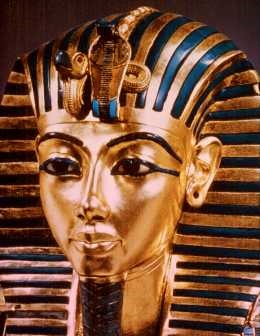
It is precisely in ancient Egypt that we observe for the first time an exhaustive use of the image of the serpent in jewelry and where we can begin the theme of its use throughout History. Besides being used as uraeus in the crowns of the pharaohs, as we saw above, the image of the serpent begins to be enormously represented in jewelry, more precisely, at the time of Cleopatra (reign: 51 century BC – 30 century BC).
In ancient Rome and Greece, both women and men wore snake-shaped bracelets, with small precious stones (especially garnets) in the eye area and with details in the head area imitating scales, made by hand. We can find examples of these in the collection of the British Museum.

The snake is also strongly represented in jewelry throughout the Renaissance period, symbolizing purity, but also in fashion, painting, and architecture of this period.
In the Victorian era (1837-1901) we find the snake taking the form of an ouroboros – a snake that bites its tail – where the spiral symbolizes evolution, and continuity.
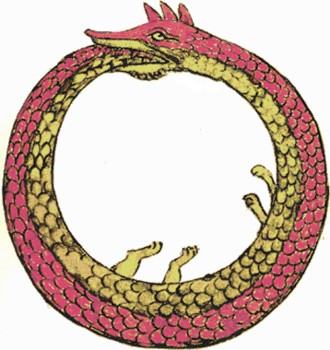
Excavations in Pompeii (18th and 19th centuries) and Egypt (early 1880s) influenced Victorian jewelry greatly. This influence materialized through the creation of pieces with the image of snakes, serpents, and beetles. We find at this time, mourning jewelry inspired by the serpent ouroboros, symbolizing an eternal connection with the dead.
Until this time, pieces of this nature were worn only by important people or those with the means to acquire them. With Prince Albert of England (1819-1861) and Queen Victoria of England (1819-1901) this trend would spread to more strata of society.
The gold ring (18kt) designed by Prince Albert and given to Queen Victoria was in the shape of a serpent with rubies in the eye area. Symbolizing infinity and eternal love, it also had a diamond in the mouth area and an emerald on the head (Queen Victoria’s birthstone).
In addition to the ring, Queen Victoria wore at her first assembly as monarch (in 1837) a bracelet with 3 intertwined snakes.
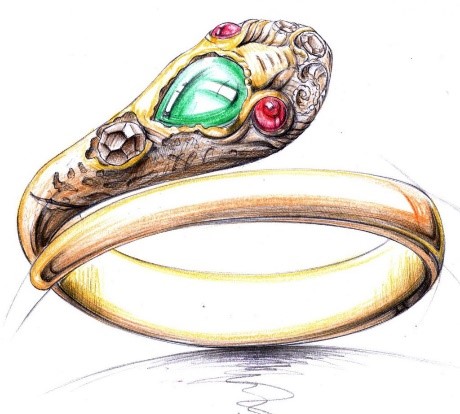
The pieces created with the snake motif in the early years of this era (late 19th century), such as necklaces and bracelets, including precious stones such as rubies (in the eye area), turquoises, enamels, and diamonds decorating the entire piece. The figure of the serpent was also widely used on pins, where one can often see the design of the Greek symbol of infinity with the body of the serpent, or the use of the figure of two intertwined serpents to form this symbol or the image of the number eight. These pieces also resorted to the use of precious stones to decorate the head and body of the figure – just like our pin.
In addition to Queen Victoria, other members of royalty wore jewelry of this nature. The French Empress Eugenie (1826 – 1920, wife of Napoleon III) was usually seen wearing a diamond and turquoise bracelet of the house Mellerio (house founded in 1613), and Princess Alexandra of England (1844 – 1925, daughter-in-law of Queen Victoria) always wore a gold bracelet in the shape of a snake with diamonds in it.
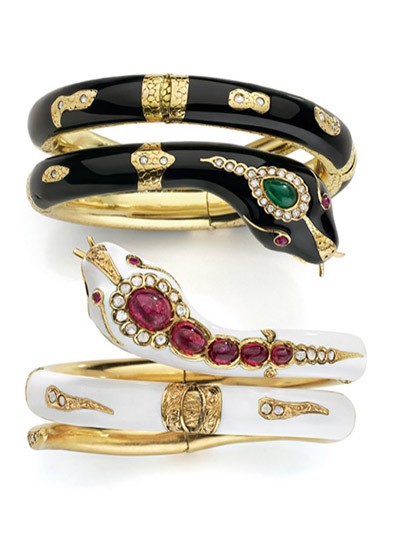
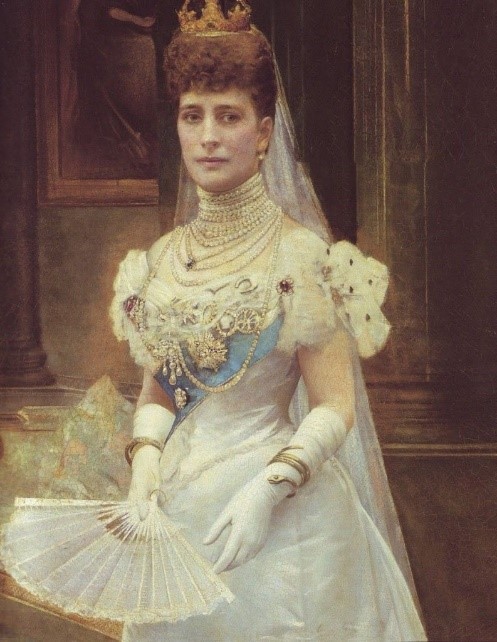
Snakes and serpents continued to be widely used and depicted in paintings, jewelry, and even furniture. But here, the use of these figures was only for decorative purposes and not to convey a message or story, as in previous eras.
In the 20th century, we again saw a new trend regarding the creation of jewelry with the image of the snake. The best-known piece is probably the necklace from the Serpenti collection, created in 1940 by the Bvlgary house. Inspired by the Greco-Roman culture, this necklace and other pieces of this collection were pioneers of a style that is still very present today in jewelry worldwide. Companies such as Tiffany & Co. and Cartier (which in 1968 created an iconic necklace for the actress Maria Felix) continue to produce jewelry with this image.
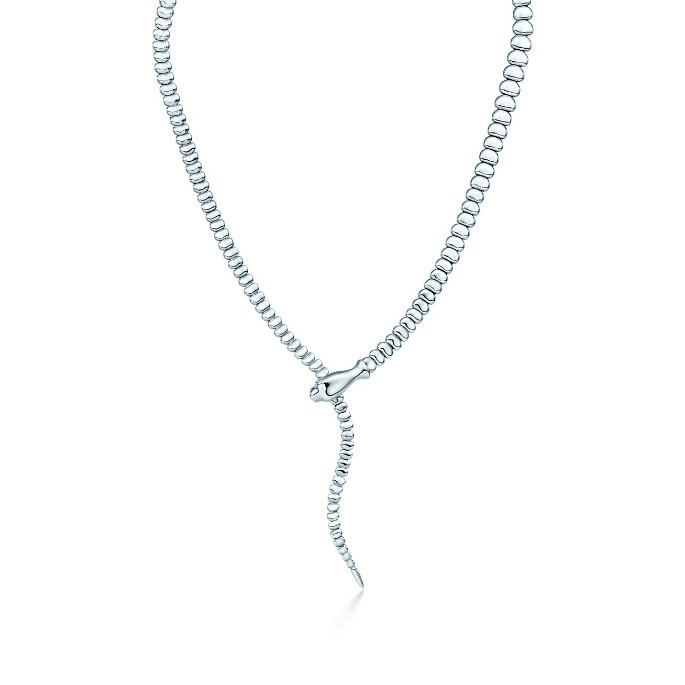
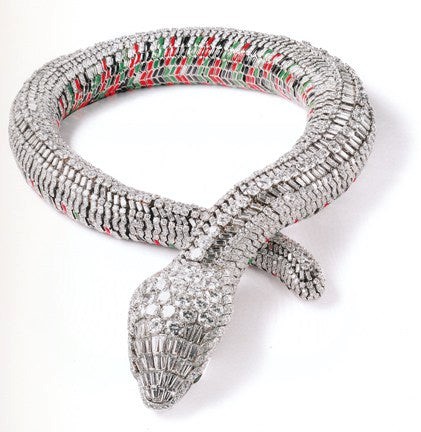
One of the best-known snake pins of today belonged to Madeleine Albright, Secretary of State of the United States, who used to use it to pass messages on important occasions. The pin in question, dating from 1860, was used in 1994 (when Albright was UN ambassador), and created a huge wave of criticism, especially from the Iraqi leader at the time Saddam Hussein. In response to these and other criticisms, Albright said that the use of it was on purpose and that it was intended to send a political message.
The use of pins on especially important occasions was a constant with Albright and they can all be seen in the Read my Pins online exhibit at the National Museum of American Diplomacy’s.

From the brief review presented, we can infer that J. Baptista’s brooch may have had as a source of inspiration pieces made in Babylon – the use of two intertwined serpents; the Greco-Roman culture – a symbol of infinity and also the Victorian era, by the way of placing the precious stones and the work on the serpent heads.
We have no way of knowing whether it was a commission or not, but we can assume that it was a gift piece because the symbolism it contains indicates fertility, health,peace, truth, infinity, and eternal love.
Visit us and see this and other pieces currently on display in our store.



